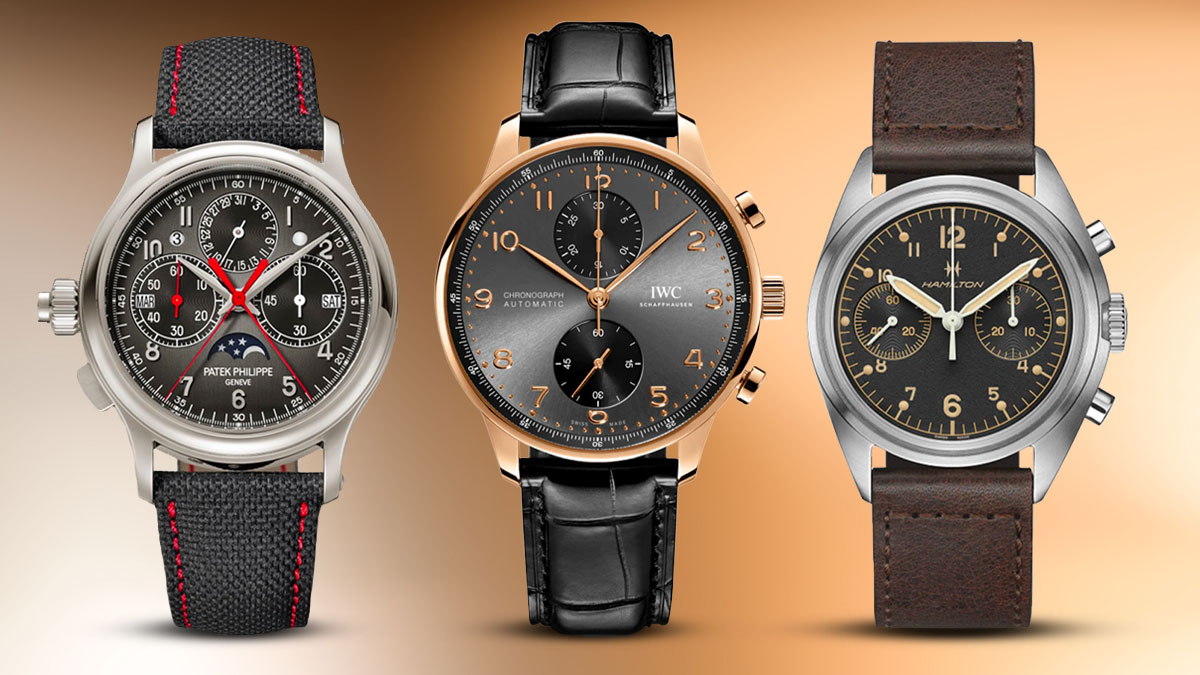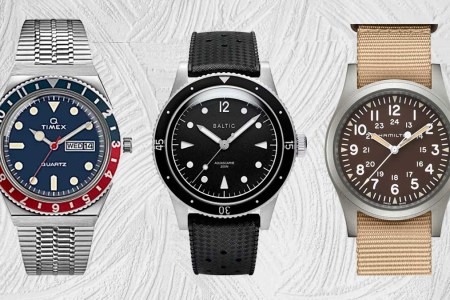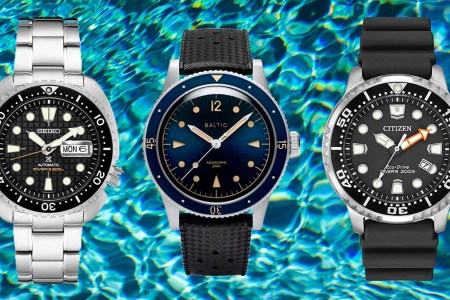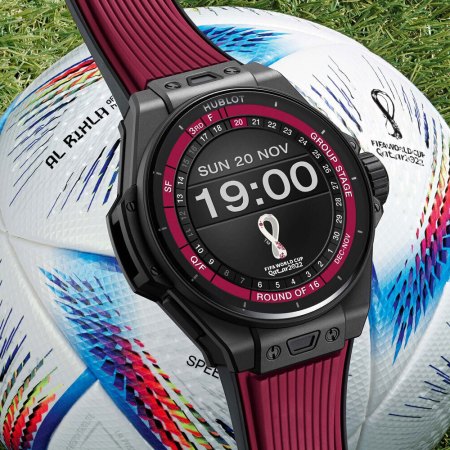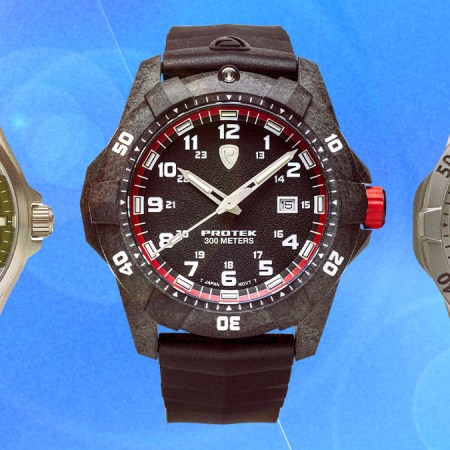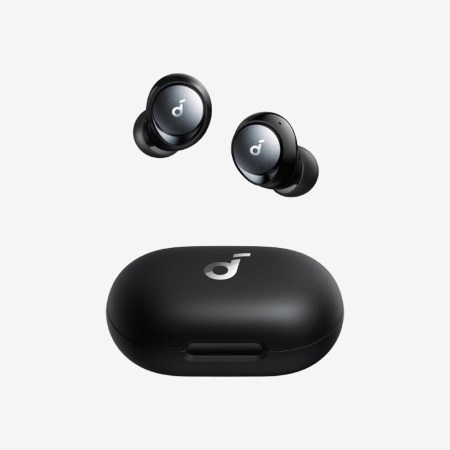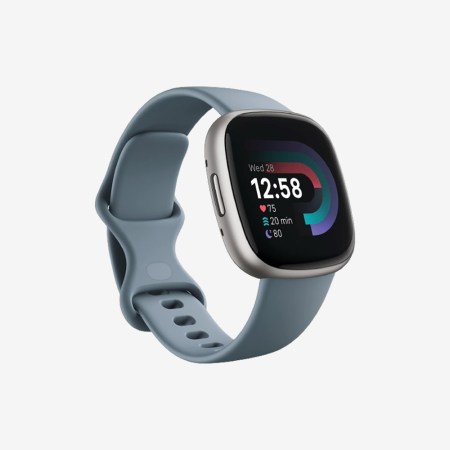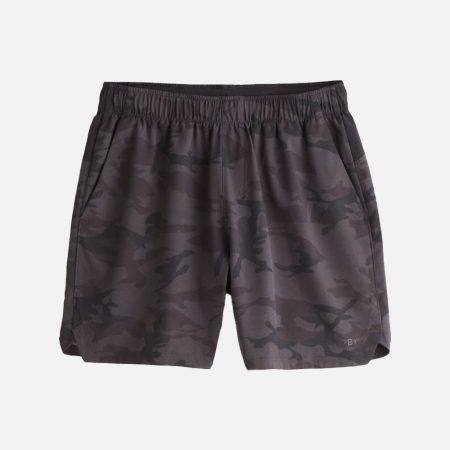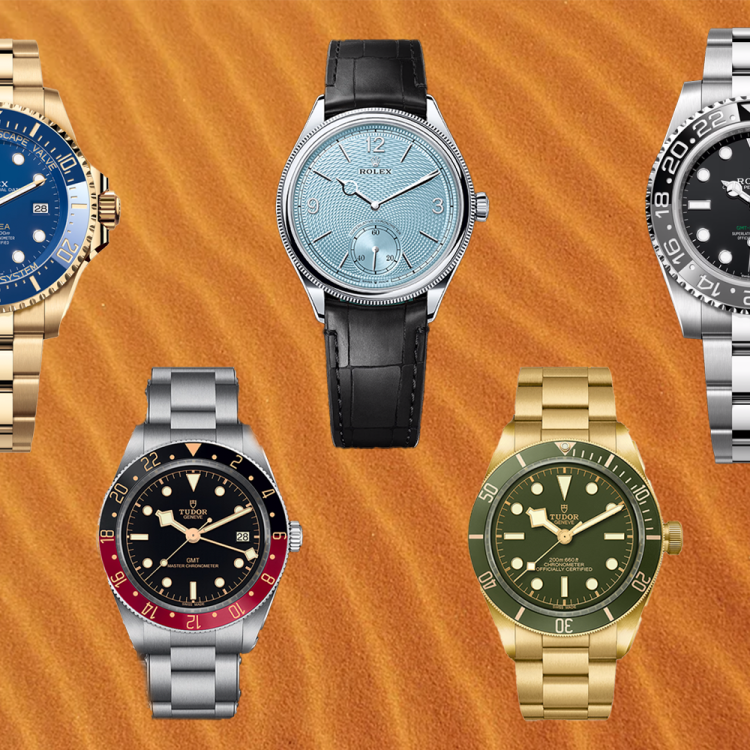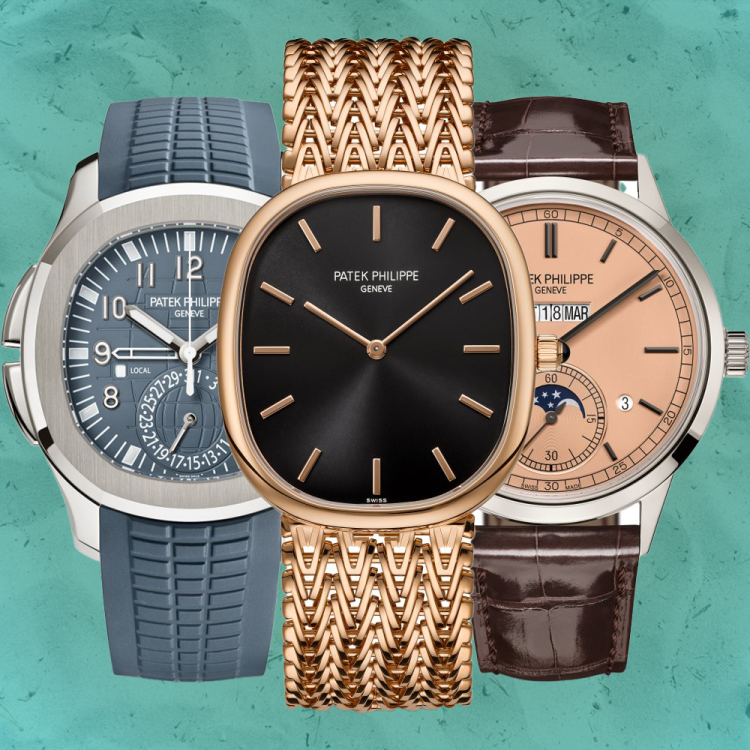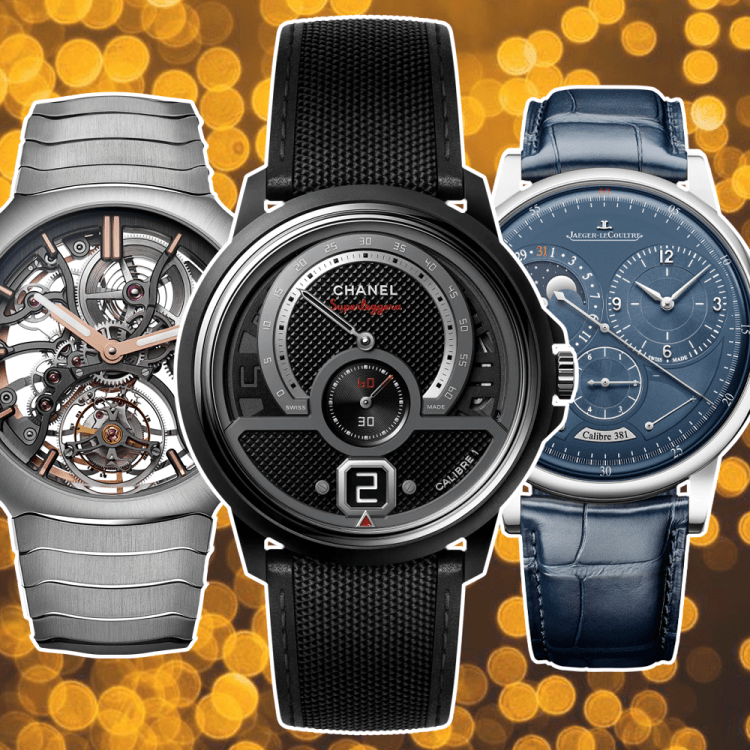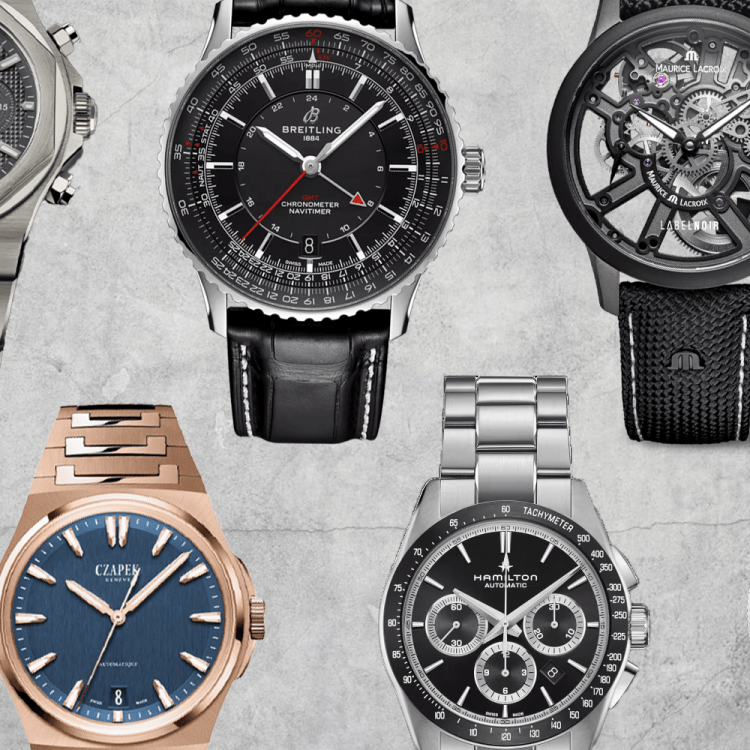Chronograph. We hear this word all the time in the watch world, but where does it come from? Turns out it’s Greek: transliterated, you get khronográphos from khronos, meaning “time,” and gráphō, meaning “to write.” So, a chronograph is essentially a “time writer.” Early versions did actually “write” the elapsed time with a pen-like instrument. But it was Louis Moinet’s 1816’s invention that constituted the first true, modern chronograph — somewhat unbelievably, this handheld timepiece featured a movement that beat at 30Hz, giving it the ability to measure time down to 1/60th of a second. (For some perspective, the average contemporary movement beats at 4 Hz.)
Modern chronographs aren’t all that different that Moinet’s invention of some two-hundred years ago: now largely wrist-borne, they allow the user to measure elapsed time and “record” it on the dial via the use of “pushers,” or buttons, that protrude from the case. Generally, a chronograph features two pushers: depress the top pusher, and the chronograph is started. A second push will stop the chronograph, allowing one to read the elapsed time on the watch dial. A push of the lower pusher resets the chronograph.
The 10 Best Watches Under $1,000
Think there are no great watches for less than a grand? Think again.You may notice that the central seconds hand on a chronograph is immobile until you engage the top pusher — this is because this is the chronograph seconds hand, not the “running” seconds hand that is constantly moving. (The running seconds hand is often relegated to a subdial, as it’s less important than the chronograph seconds hand.) The other subdials — also called “sub-registers” or “totalizers” — are where you read the elapsed minutes and hours. On a dual-register chronograph, it’s common to see one sub-register for passing seconds, and another for elapsed minutes, often up to 30. On a triple-register chronograph, a third sub-register is added for elapsed hours, often up to 12.
In the 19th and 20th centuries, chronographs were extremely useful, seeing as they were just about the only practical way to record elapsed time. Horse races, artillery barrages, hot laps — all were once timed using hand-held or wrist-worn chronographs. During the Apollo XIII mission, American astronaut Jim Lovell famously timed an engine burn in order to reorient the Lunar Excursion Module back with Earth and save his crew. Pretty gnarly.
These days, of course, our phones time just about anything with significantly higher resolution than that of the common mechanical chronograph, rendering these largely obsolete. However, this has done virtually nothing to diminish their appeal in the minds of the mechanically inclined — or those simply interested in accumulating status objects. After all, how many Rolex Daytona wearers understand how their chronographs actually function, let alone use them? The answer, at least in the U.S., is very likely: not too many. But the Rolex Daytona is arguably one of the top five most beloved and popular luxury watches in the world, with waitlists stretching years into the future. Go figure!
Whatever the reason for your interest in a chronograph, we applaud you. Here, we’re going to cover some key terminology, and then get right into what we feel are some of the best chronographs to buy, from affordable to…not so affordable. So strap yourself in and get ready to time that engine burn.
Key Terms
Pushers: Small buttons that protrude from the case and allow the wearer to start, stop, and rest the chronograph. There are “pump” pushers that do not screw down, and “screw-down” pushers — threaded like a screw-down crown, they allow for increased water resistance.
Monopusher: A chronograph that uses a single pusher for start, stop, and rest duties. Willy Breitling invented the dual-pusher chronograph, which improved upon this design, in 1934.
Totalizer: Also called a sub-register or a sub-dial, this small dial within the larger watch dial shows running seconds, elapsed minutes, elapsed hours, or other timing information.
Rattrapante: Called a “split-seconds” chronograph in English, the rattrapante features dual central seconds hands and allows the user to time two events simultaneously.
Flyback: A chronograph in which a single push will stop and rest the chronograph, allowing for the timing of successive events, such as laps.
The 12 Best Dive Watches Under $1,000, From Seiko to Unimatic
These high-performance timepieces look great and won’t break the bankAutomatic Chronograph: Until 1969, all chronographs were hand-wound. The Calibre 11, El Primero, and Caliber 6139 were some of the earliest automatic chronographs.
Tachymeter: A scale often found around the periphery of the dial — or on the bezel — of a chronograph that allows the user to calculate speed.
Telemeter: A scale often found around the periphery of the dial — or on the bezel — of a chronograph that allows the user to calculate the distance between an object and the observer.
Pulsometer: A scale often found around the periphery of the dial — or on the bezel — of a chronograph that allows the user to calculate pulse.
Clutch: A type of coupling connecting the chronograph to the gear train for the watch’s main timekeeping. A “horizontal clutch” is slimmer and more common, while a “vertical clutch” is more often found in higher-end chronographs, and makes for smoother chronograph operation.
Ten Chronographs to Buy

Bulova Lunar Pilot
The other “moon watch,” the high frequency quartz-powered Lunar Pilot descends from a mechanical chronograph worn by astronaut Dave Scott on the lunar surface. (The crystal had popped off his NASA-issued Speedmaster.) Widely available for well under $1,000 in various configurations, the contemporary Lunar Pilot beats at a whopping 262 kHz and features large “paddle” pushers, a Speedmaster-esque dial, and an optional, subtle date window. Not everyone will be able to pull off a 45mm case, but if you’ve got the wrist for it, the Lunar Pilot is an awesome, affordable chrono, and a solid choice.
- Diameter: 45mm
- Movement: Bulova NP20 quartz
- Water Resistance: 50m
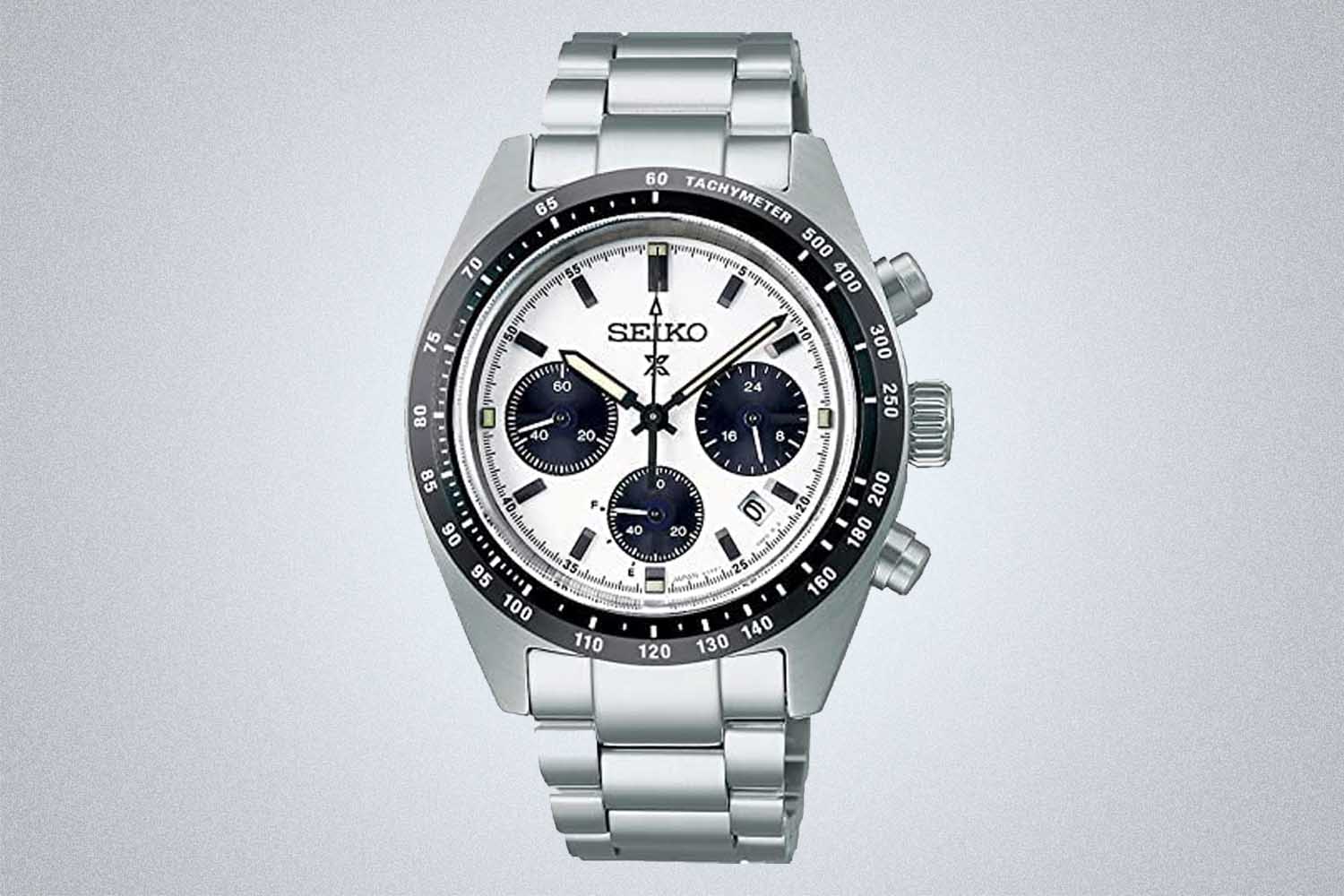
Seiko Speedtimer Chronograph
Of course, a great chronograph needn’t be mechanical. To wit: Seiko’s excellent Speedtimer is a quartz-powered star. In fact, its quartz V192 movement is solar-powered, and features an incredible 6-month power reserve once fully charged. With multiple dial and bezel colors to choose from, plus superb proportions and a matching stainless steel bracelet, the Speedtimer is the perfect, affordable entry into the chronograph world. Best of all? They can often be had on Amazon for around $500 — which is quite the value proposition, if you ask us.
- Diameter: 39mm
- Movement: Seiko V192 quartz
- Water Resistance: 100m
- Price: ~$440+
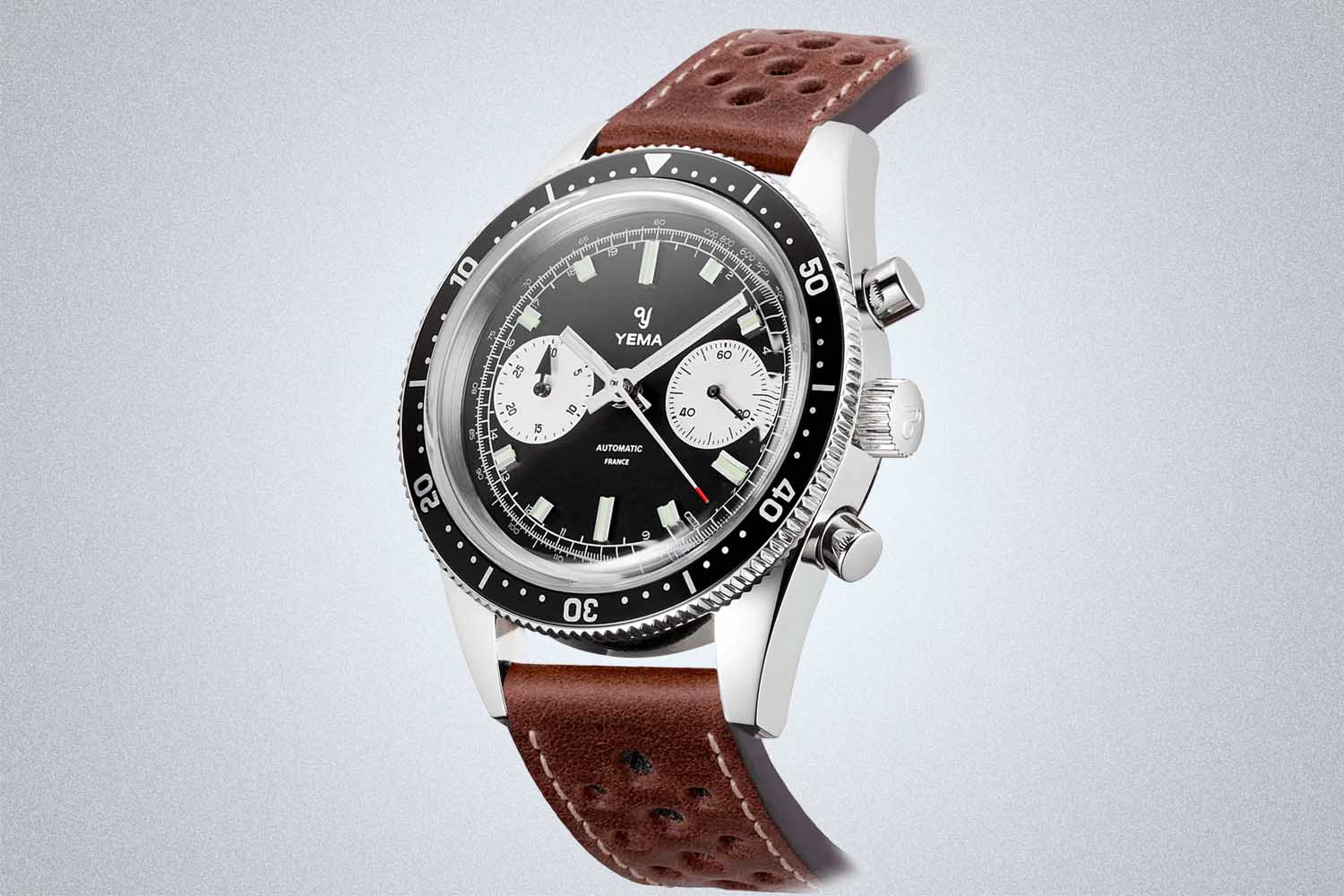
Yema Speedgraf
Another vintage-inspired reissue, this handsome tool watch uses an uncommon Seiko automatic chronograph movement that manages to include a column wheel and vertical clutch — making for super-smooth chronograph operation — in a timepiece costing less than $2,000. Its contemporary-feeling 39mm case, sapphire crystal, and automatic operation will be appreciated by modern wearers, while its throwback aesthetics and breathable “rally” strap will please vintage watch enthusiasts. For this kind of money, there simply isn’t much competition from other medium-sized brands.
- Diameter: 39mm
- Movement: Seiko NE86 automatic
- Water Resistance: 100m
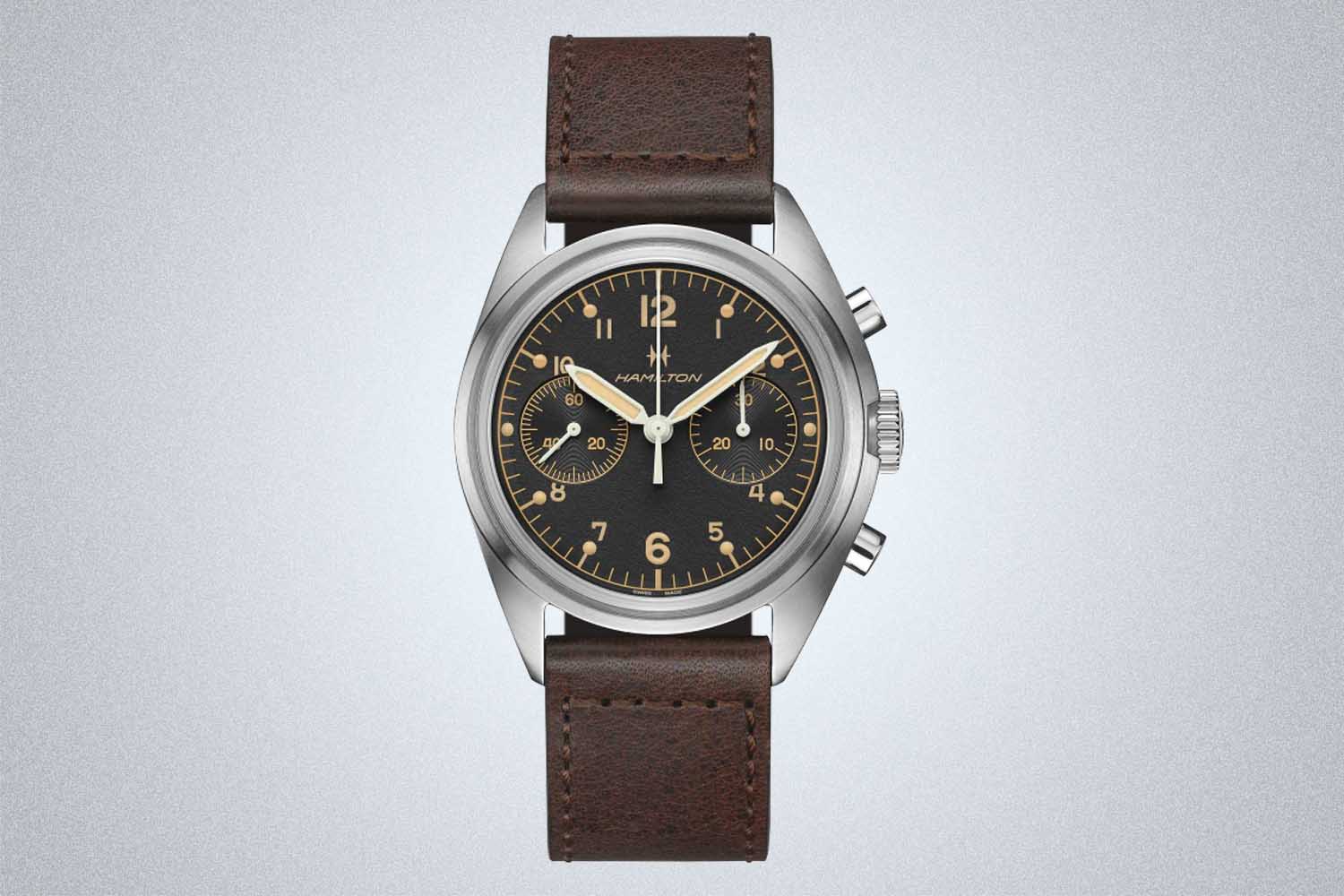
Hamilton Khaki Aviation Pioneer Mechanical Chrono
Styled after a watch issued to RAF pilots in the 1970s, the Khaki Aviation Pioneer Mechanical Chrono is such a spot-on recreation, you’d be hard-pressed to tell the original from the current iteration. Well sized at 40mm and featuring vintage-colored lume, it looks like a museum-grade piece of vintage militaria — but the hand-wound Hamilton Calibre H-51-Si beating away inside makes use of a silicon balance spring and features an impressive 60-hour power reserve. Strap this baby on — and add a good scarf — and you’ll be ready to take to the skies!
- Diameter: 40mm
- Movement: Hamilton H-51-Si hand-wound
- Water Resistance: 100m
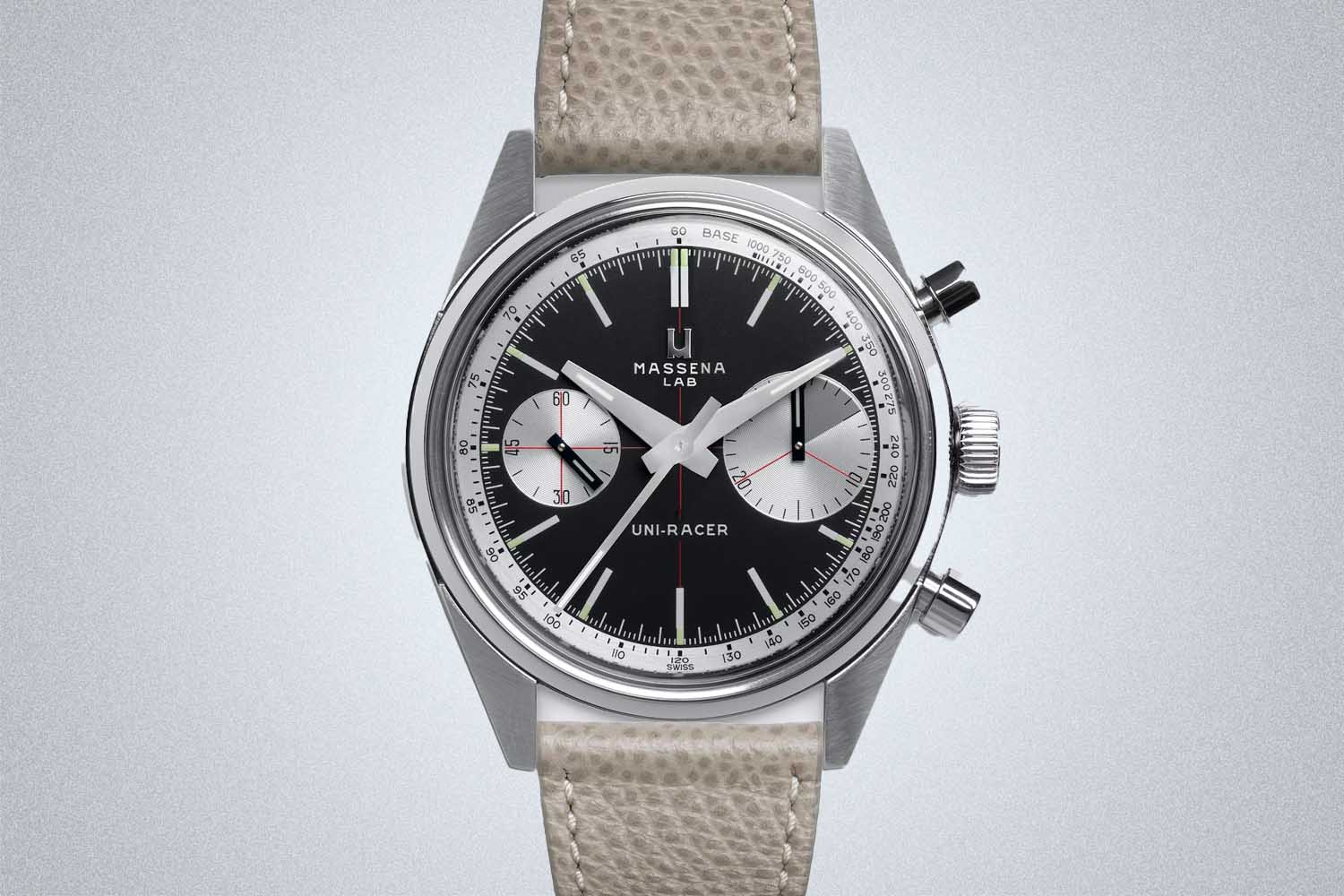
Massena LAB Uni-Racer
If you’re not deep into vintage chronographs, you might never have heard of the Universal Genève Uni-Compax. A gorgeous watch made in the 1960s, the Uni-Compax is rare, with good examples selling in excess of $25,000. Thankfully, noted watch world veteran William Massena revived the design in the form of his contemporary Uni-Racer. Available in multiple colors — including classic “panda” and “reverse-panda” designs — this handwound, Swiss-made beauty is a sleeper hit, and well worth the price of admission.
- Diameter: 39mm
- Movement: Sellita SW510 hand-wound
- Water Resistance: 50m
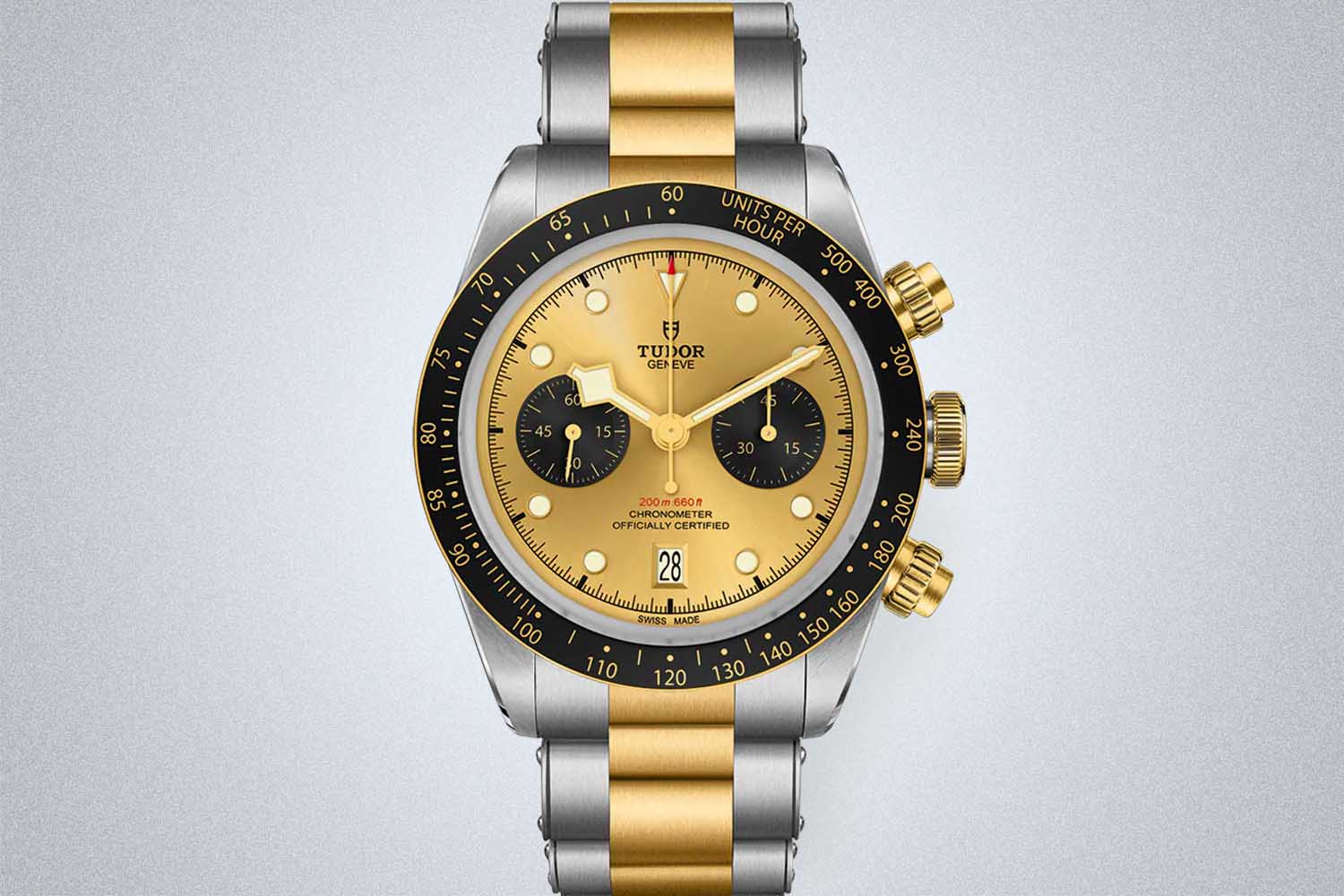
Tudor Black Bay Chrono
If you dig the Daytona aesthetic but don’t want to wait years for a watch allocation — or spend nearly 15 Gs — then you should check out the Tudor Black Bay Chrono. A fantastic design in its own right, this chunky tool watch looks handsome in all its different configurations, from two-tone, to panda, to reverse-panda, and from bracelet to “Bund” strap to fabric strap. Powered by an in-house Tudor movement and waterproof to 200m, this is a serious adventurer’s watch that’s ready to take on the world, and it’s so well built that your grandkid will be wearing it one day.
- Diameter: 41mm
- Movement: Tudor Calibre MT5813 automatic
- Water Resistance: 200m
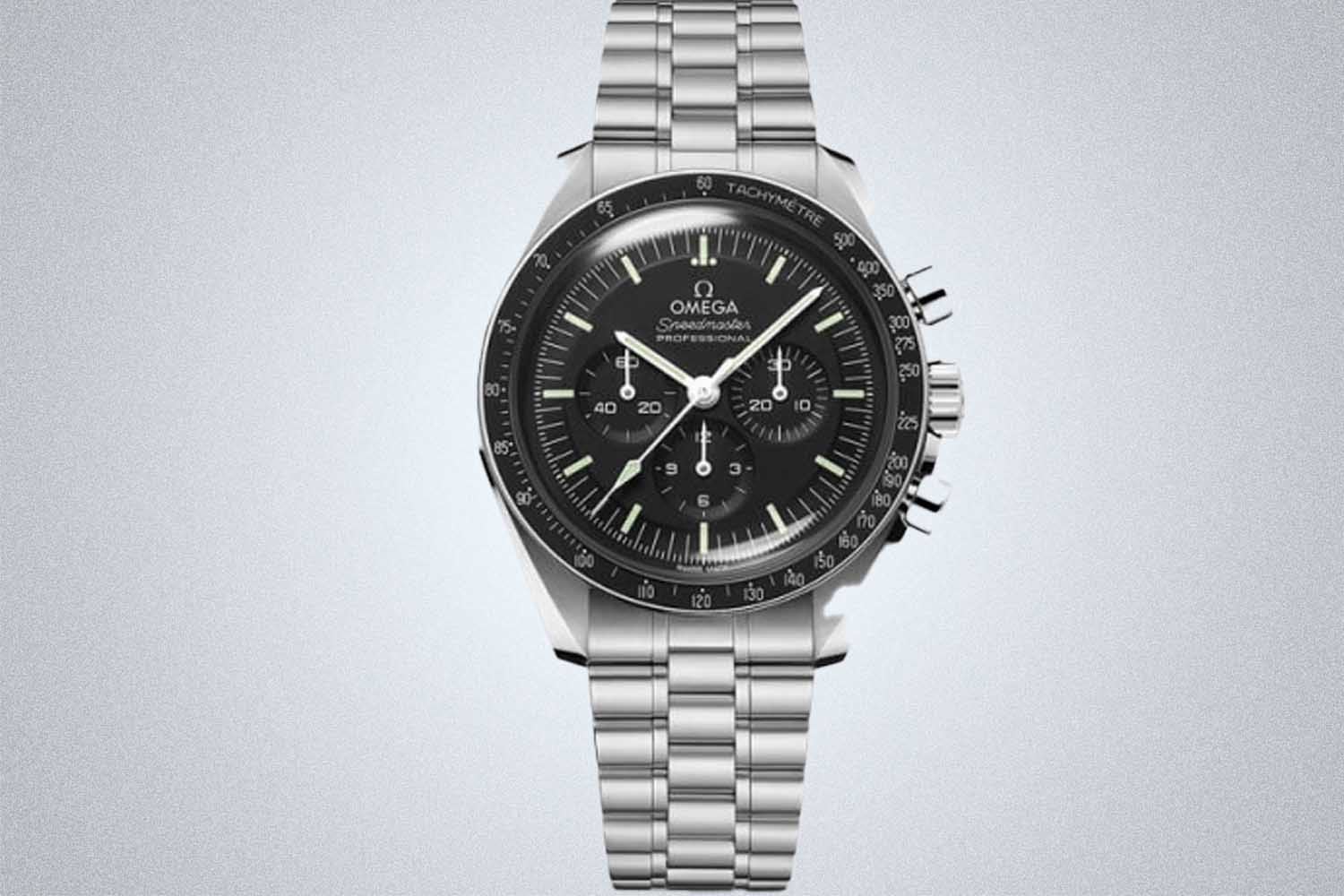
Omega Speedmaster Professional
Given its famed association with NASA — it was the first watch worn on the surface of the Moon, after all — it’s no surprise that the Omega Speedmaster Professional is consistently at the top of the watch buying public’s mind. Produced in several configurations and available at various price points, the Speedy is a perennial horological favorite, and deservedly so: Legible, practical, handsome, and widely available, it’s simply a winner of a wristwatch, and one of the best chronographs ever made. (Especially in its current steel iteration with the 3861 movement — the contemporary bracelet is a vast improvement over the last generation.)
- Diameter: 42mm
- Movement: Omega Calibre 3861 hand-wound and others
- Water Resistance: 50m
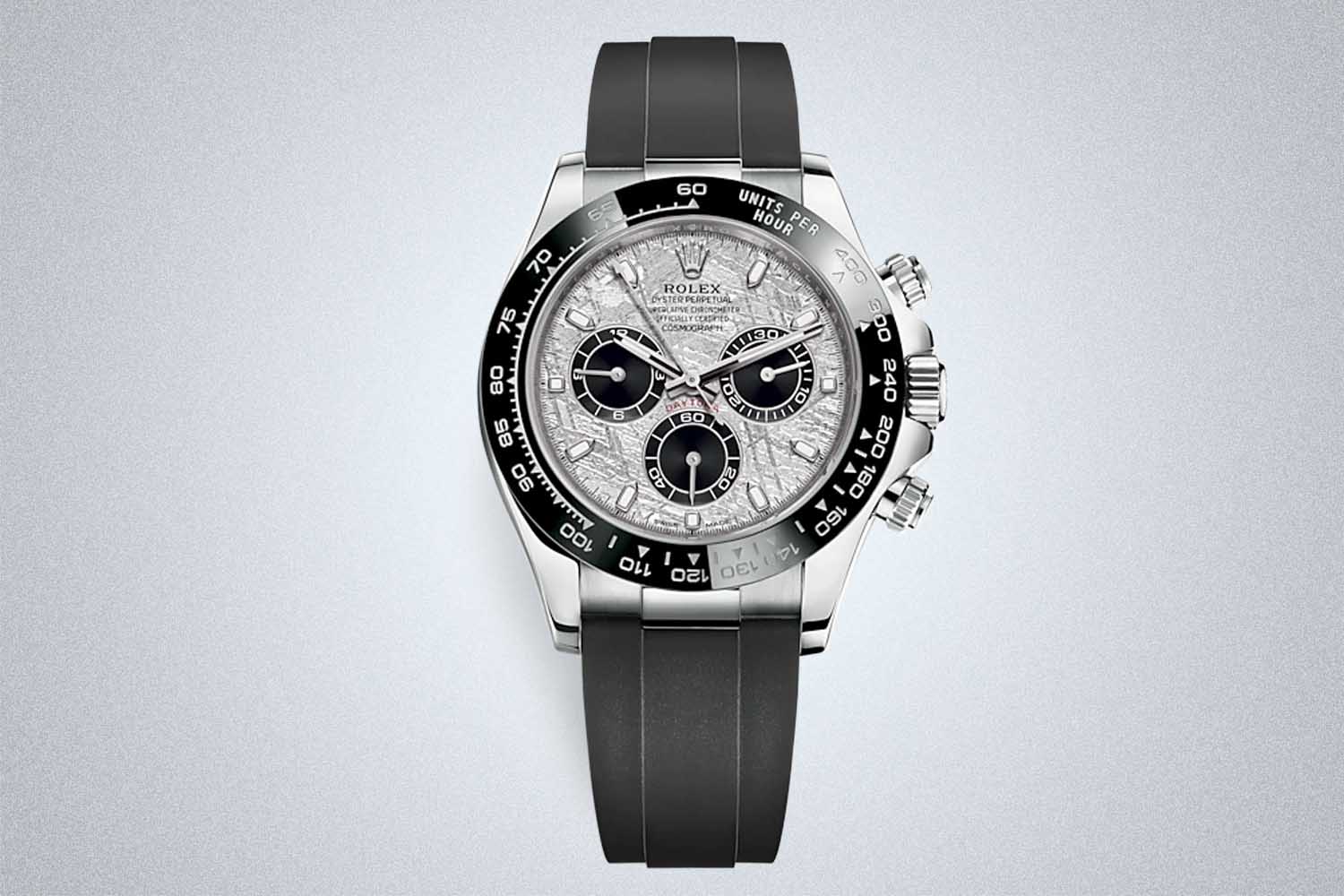
Rolex Cosmograph Daytona
Duh. The world’s most famous chronograph — excepting, of course, the Omega Speedmaster — the Daytona was born in the early 1960s following Rolex’s sponsorship of the 24 Hours of Daytona in Florida. Of course, it was far from Rolex’s first rodeo as far as chronos were concerned; the brand had been making them for decades already in various guises. Today, the Daytona is difficult to acquire at retail, and vintage hand-wound examples sell for tens (and sometimes hundreds) of thousands of dollars. The contemporary, automatic version features the latest materials and an excellent, in-house Rolex movement in the form of the Calibre 4130.
- Diameter: 40mm
- Movement: Rolex Calibre 4130 automatic
- Water Resistance: 100m
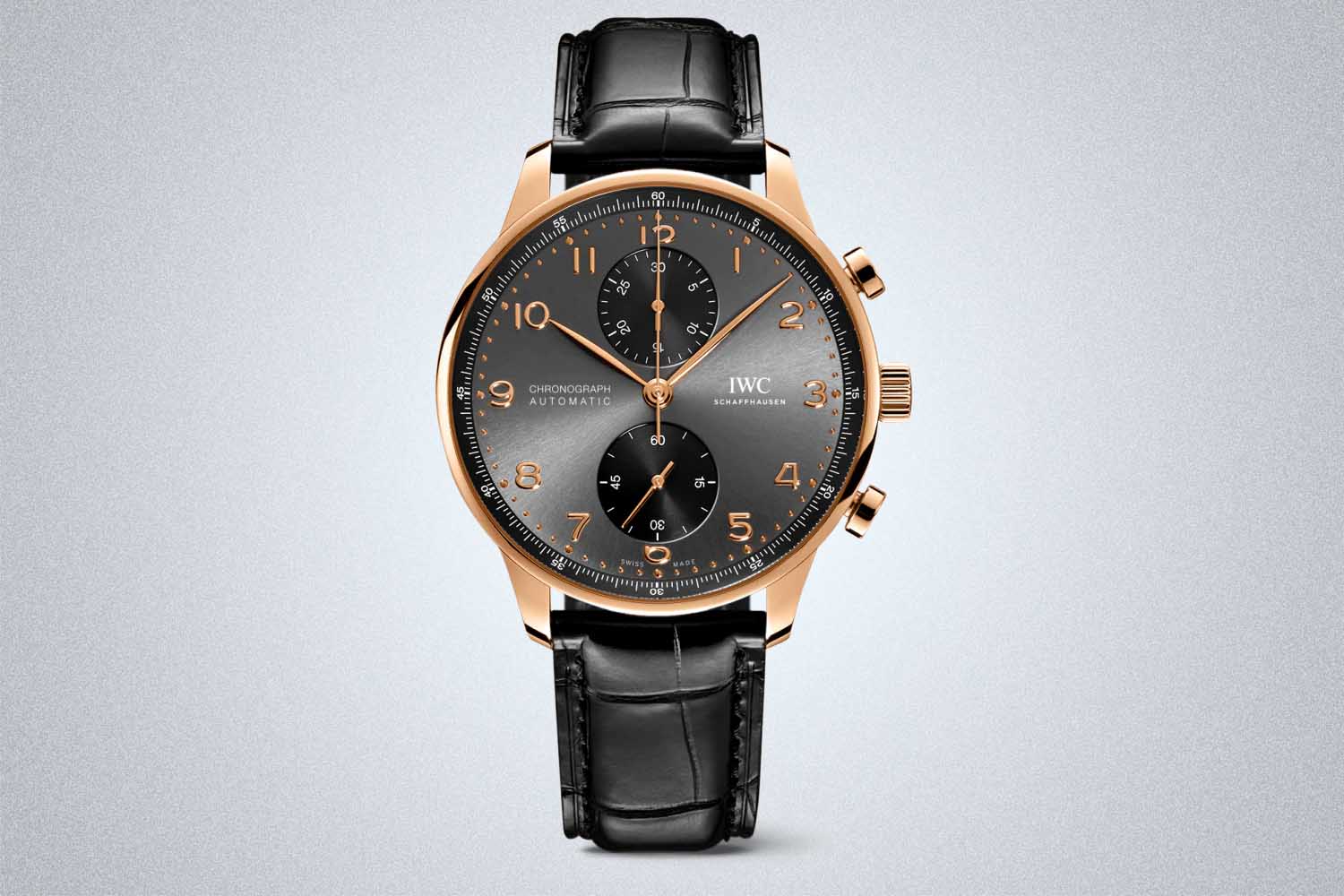
IWC Portugieser Chronograph
Not all chronographs are tool watches. Take the IWC Portugieser line — beautiful to behold, these watches are made for an evening out on the town, or as accompaniment to a finely tailored suit at the office. This particular model features the collection’s classic up-down configuration, with the totalizers placed at 12 and 6 o’clock, plus a stunning 18K gold case, an in-house movement, and a mesmerizing slate grey dial in a sunray finish. If you’re looking for a pilot’s watch, IWC has plenty of those — but classics such as the Portugieser shouldn’t be overlooked.
- Diameter: 41mm
- Movement: IWC Calibre 69355 automatic
- Water Resistance: 30m
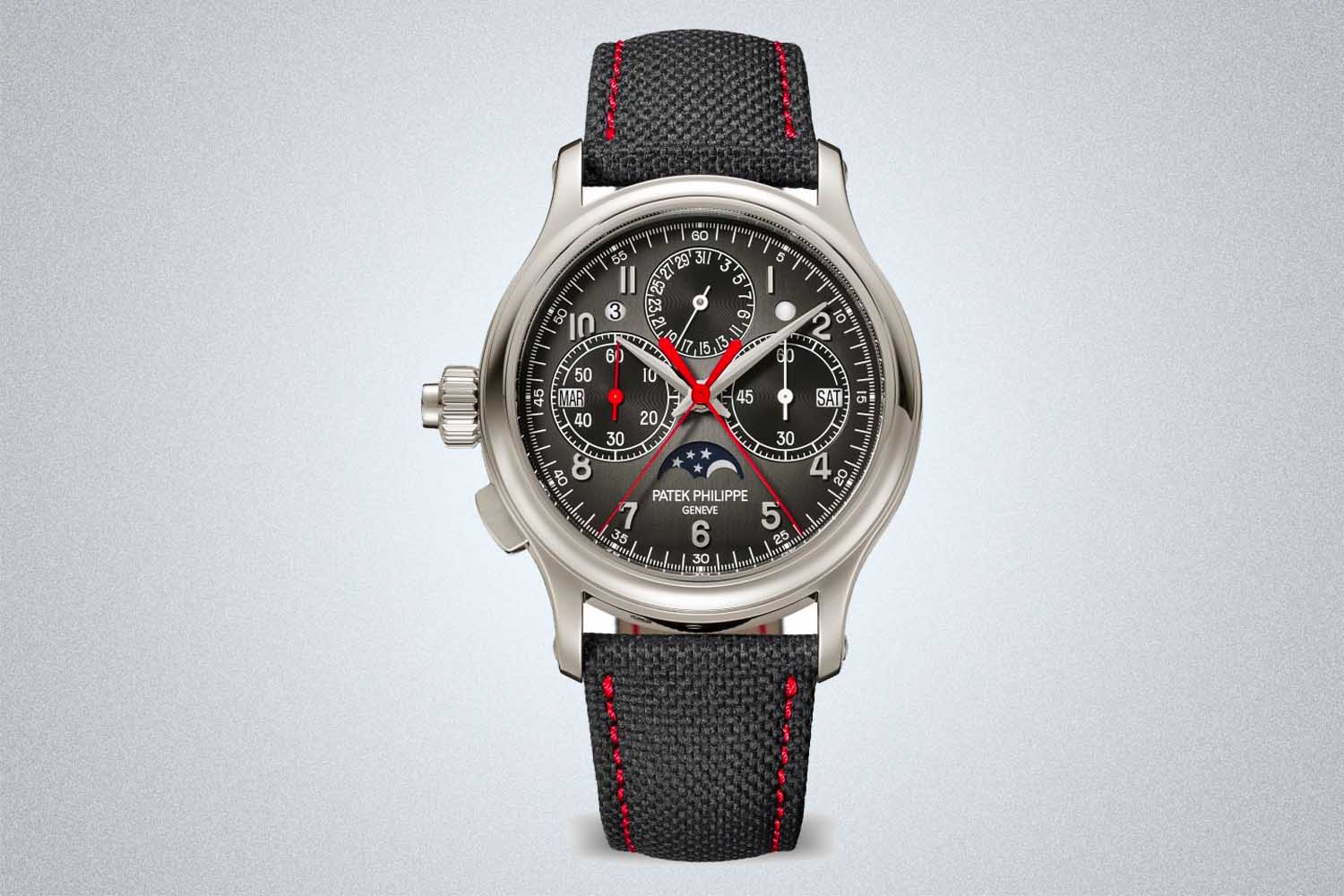
Patek Philippe 5773P Grand Complication
In haute horlogerie, chronographs are often combined with other complications to form, well, more complicated watches, called “grand complications.” This particular “grand comp” combines a split-seconds chronograph with a perpetual calendar, which is controlled by a single pusher inset into a platinum case in a lefthand configuration. Emblematic of the type of high-end watchmaking for which Patek Philippe has long been known, it’s priced at “If You Have to Ask…,” but such is the cost of owning a timepiece that takes decades of experience to produce.
- Diameter: 38.3mm
- Movement: Patek Philippe Caliber CHR-27-525 PS Q
- Water Resistance: 30m
This article was featured in the InsideHook newsletter. Sign up now.
